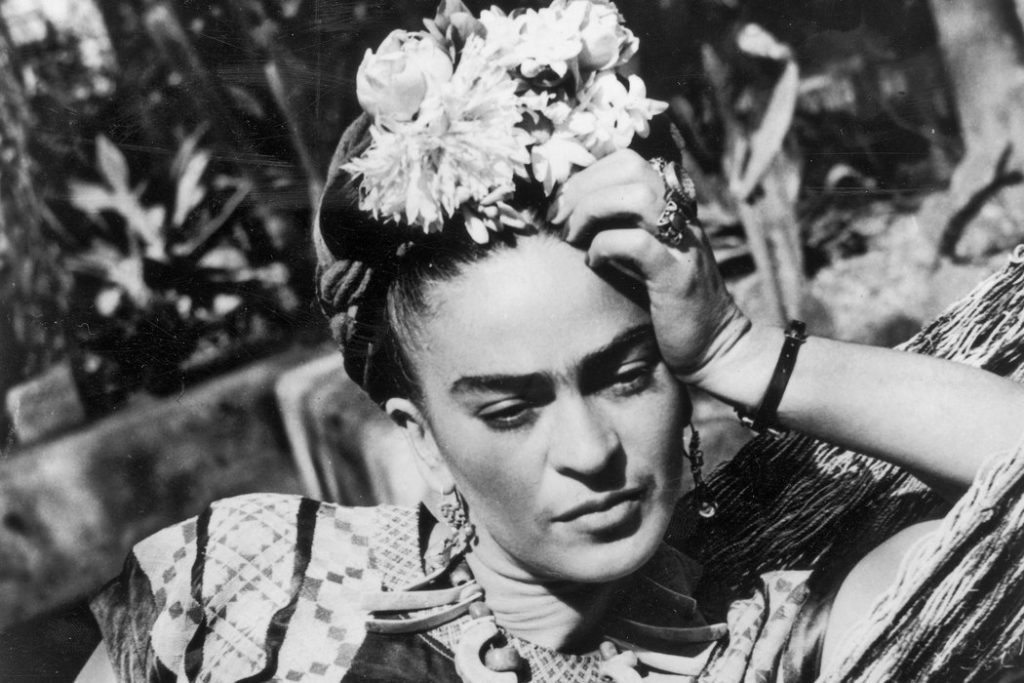The life and times of Frida Kahlo
Rebel, painter, lover, communist, sexual liberator, Frida Kahlo was all that and much more. Born Frida Kahlo de Rivera in Coyoacán, Mexico, Frida has brought about an artistic revolution that outlives her lifetime. The now internet-icon was unaware of the cult status that would befall her following her death in 1954 at the age of 47.
Known for her self-portraits that shifted the tectonics of modern art and gave impetus to the portraying of the self as the subject, a practice and art that gradually evolved into a modern day fad. “I paint self-portraits because I am the person I know best. I paint my own reality,” stated Frida in her letters.
Born during troubled times, the Mexican Revolution had left an impact on her lifestyle and artwork, the latter half of the later being dedicated to the working class. She even preferred to declare 1910 as her birth year, to coincide with the start of the Mexican Revolution, when she was just three years old. “Pain, pleasure and death are no more than a process for existence. The revolutionary struggle in this process is a doorway open to intelligence,” stated Frida in her The Diary of Frida Kahlo: An intimate self-portrait. Her inspiration was her lover, her husband Diego Rivera, a renowned artist and muralist in his own rights. What followed the public marriage was a series of extraordinary love stories, photographs and paintings depicting the on-off relationship.
The iconic figure ironically failed to sell her paintings during her lifetime which later sold for millions. According to a report, “At an auction of Latin American art held by Sotheby’s in May 1985, a painting depicting the artist as a hunted deer pierced by arrows, which was offered as the star lot, failed to sell. Almost a decade later, another Kahlo painting was featured on a cover of a Sotheby’s catalog. This portrait of the artist with a parrot and a monkey was hammered down quickly for more than $3 million, at the time a worldwide record for a Latin American artist. Five years later, a 1929 Kahlo self-portrait sold to an Argentine collector for $5.1 million.”
Today the proto-feminist finds herself featured in posters, refrigerator magnets, adult and baby couture, artwork, pop-art, granting her an undeniable place in the 21st century pop culture.
“You can’t just call Kahlo’s paintings to be art, they mirror her life and through these reflections she has always kept on inspiring me. She has always taken pride in the way she was and has preached the same. Her beauty, her boldness and she herself as an entity will live on till eternity,” commented Soumyajit Ghosh Dastidar, a film student and follower of Frida’s art and work on her cult status.
The Indian Roots
Self-portraits are a work of art, an art fully realised during the short span of Frida’s lifetime which slowly began to spread across Europe and later, even beyond it. Frida Kahlo’s body of work tantalised and teased the prevalent European influences, by adding a primitive touch to modern European forms of painting. The ‘Indian Frida Kahlo’ did just that. 20th-century Hungarian-Indian artist Amrita Sher-Gil despised the “cheap emotional appeal,” that was being portrayed through cliché representations of the ‘exotic East’. Her painting emerged, as a scandalous breakthrough of “20th century India as it emerged from a century of British rule.”
Needless to say, her unorthodox body of work and self-portrayal, quite similar to that of Kahlo’s set motion to a whole new indigenous art movement.
Nayantara Sahgal, Indian author, critic and journalist, also happened to come in touch with Kahlo during her visit to Mexico with her sister Rita Dar.

Frida Kahlo wearing a sari, an Indian drape, along with a young Nayantara Sahgal and her younger sister, Rita Dar.
Sahgal wrote, “I had just graduated from Wellesley College in the summer of 1947. We visited Frida whom our host in Mexico knew. We put her in one of our saris and she loved it. Frida gave me two beautiful photos of herself, inscribed by her.”
Designer Sabyasachi Mukherjee, just like French designer Jean Paul Gaultier and Giada Curti too found a muse in Frida Kahlo.














